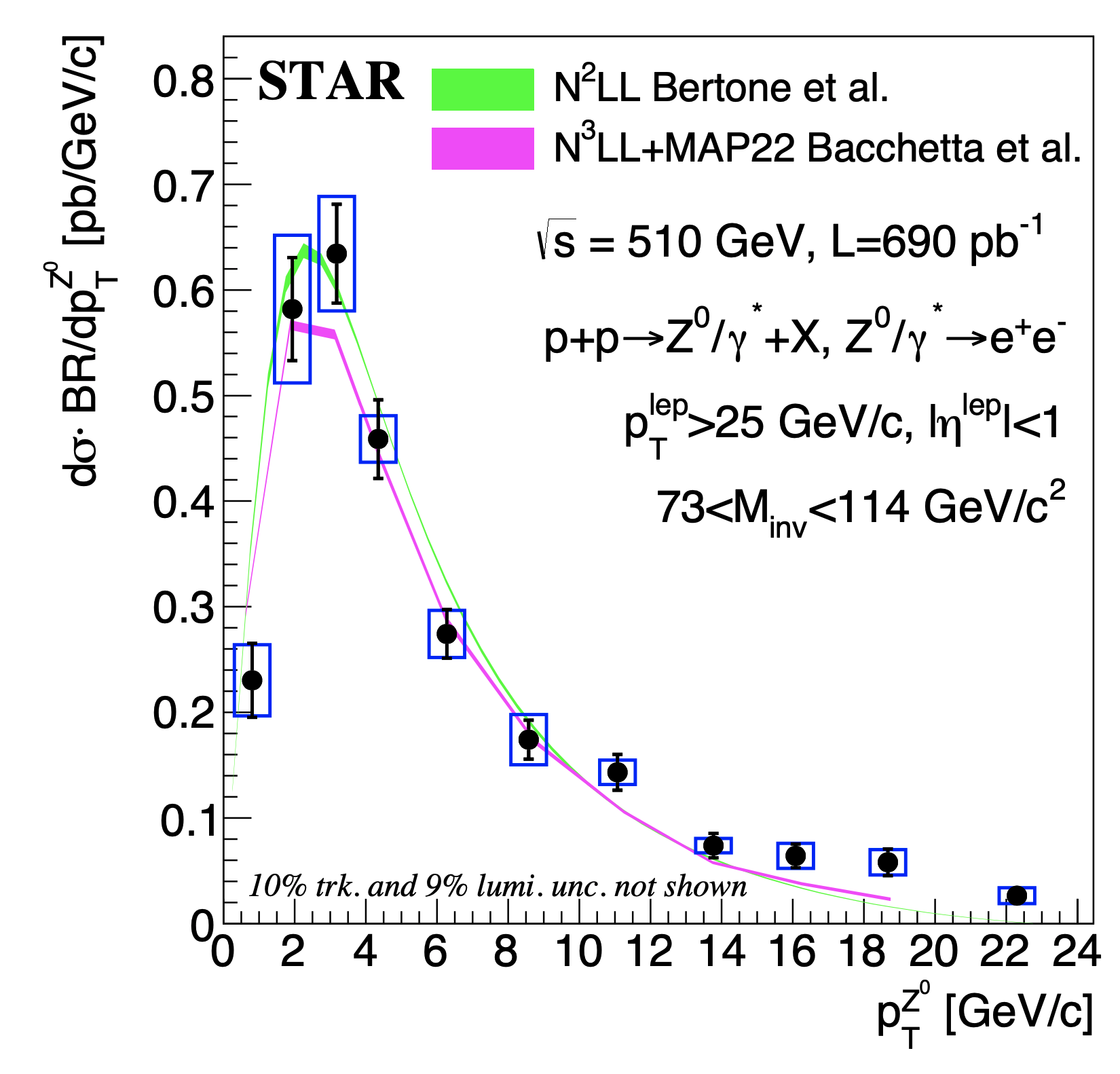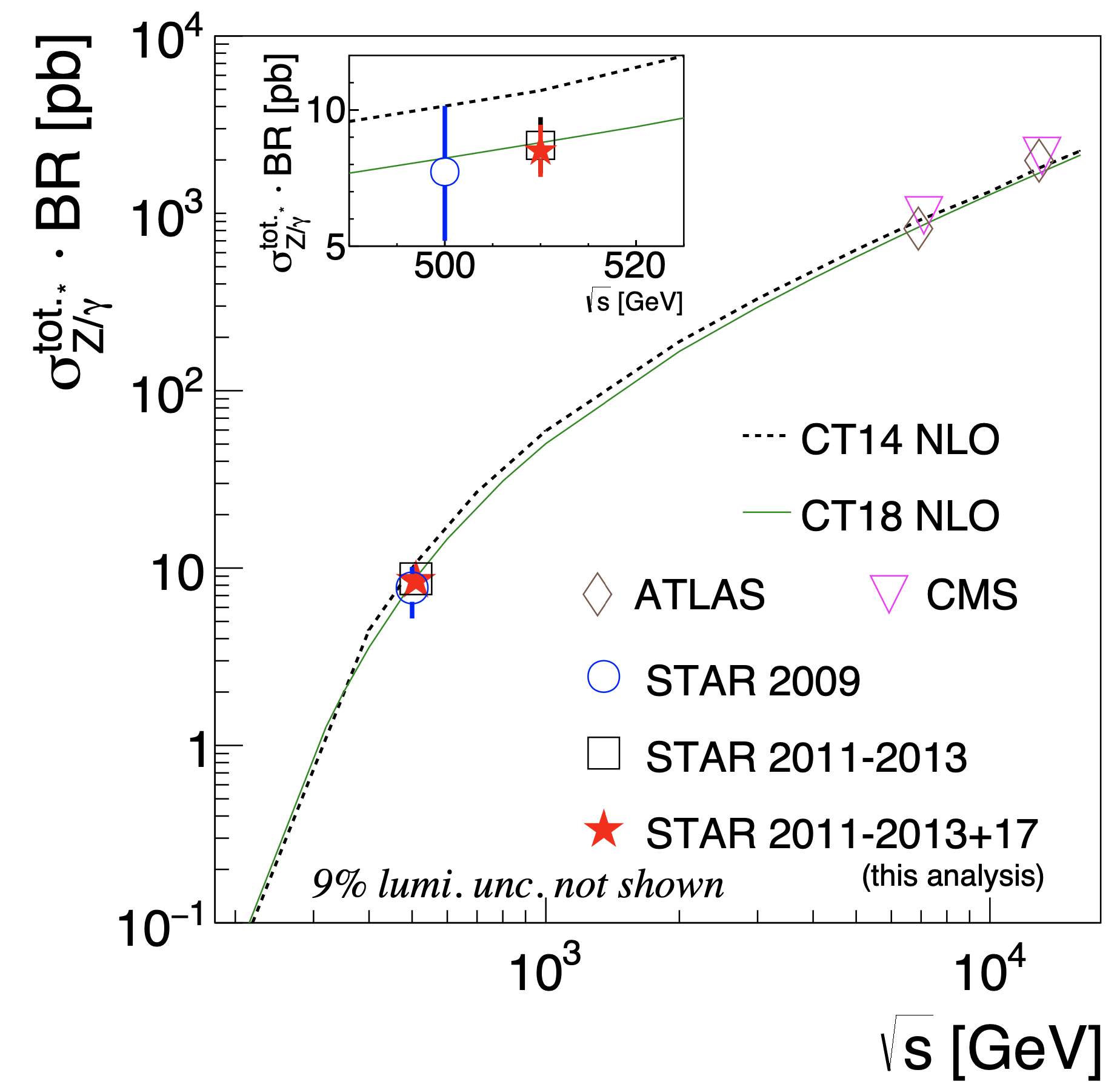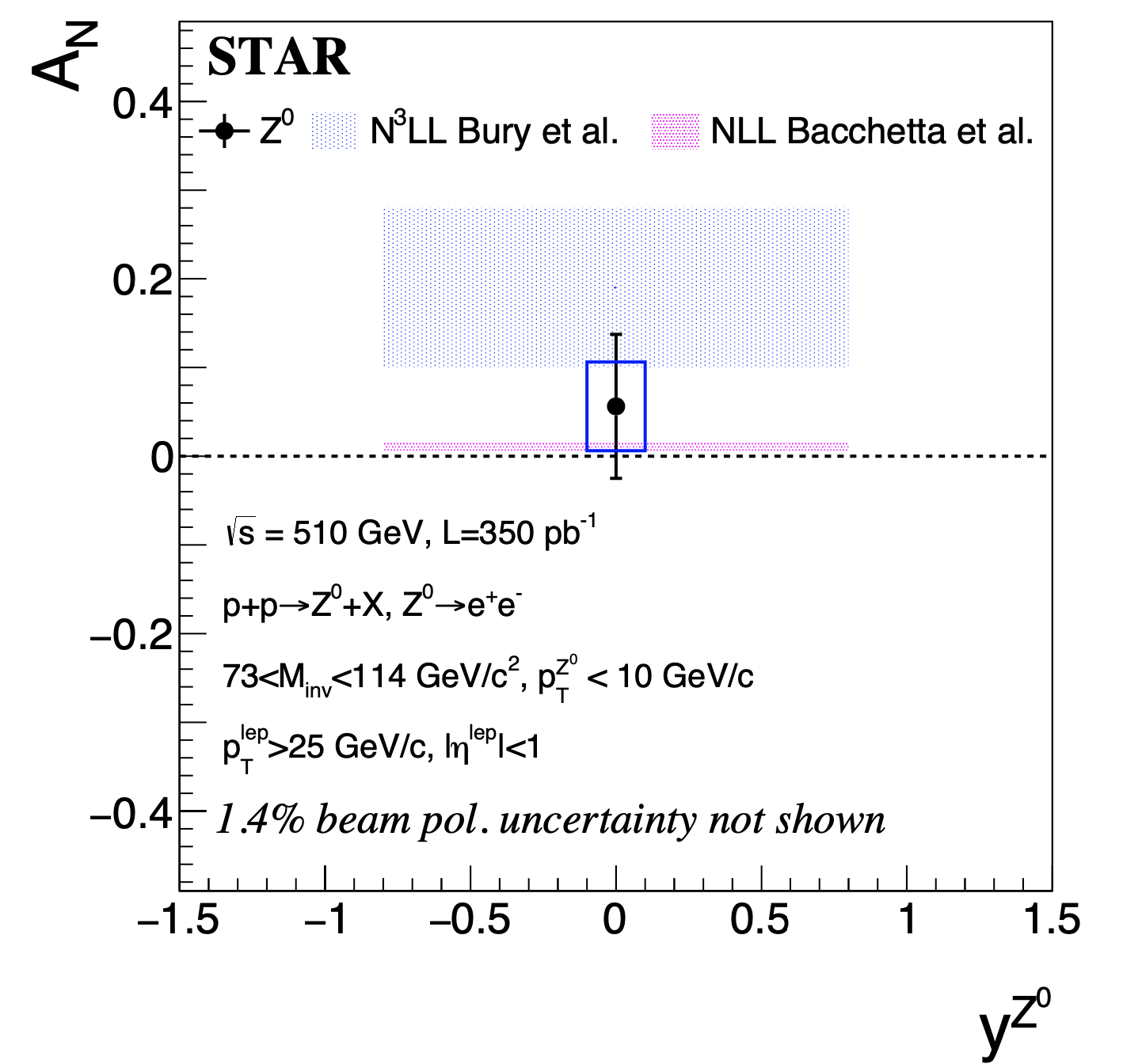- xchu's home page
- Posts
- 2024
- October (1)
- 2023
- 2022
- 2021
- December (2)
- November (1)
- October (1)
- September (1)
- August (2)
- July (1)
- June (3)
- May (2)
- April (3)
- March (1)
- 2020
- October (2)
- September (1)
- August (5)
- July (1)
- June (3)
- May (3)
- April (1)
- March (2)
- February (4)
- January (1)
- 2019
- My blog
- Post new blog entry
- All blogs
Z0 cross section and TSSA paper proposal
Title: Measurements of the $Z^{0}/\gamma^{*}$ cross section and transverse single spin asymmetry in 510 GeV $p$$+$$p$ collisions
PAs: Elke-Caroline Aschenauer, Xiaoxuan Chu, Oleg Eyser, Salvatore Fazio
Submitted to arXiv:
PLB, Ref. No. PLB-D-23-01267
arXiv:2023.15496
Paper draft:
before GPC
v1, v2, v3 (Fig2 not updated)
during GPC
v3.1 (Fig2 updated)
v4
v5
v6
v7
Collaboration Review
v8
v8_Diff
v9
v10
Analysis note:
before GPC
v1, v2, v3
during GPC
v4
v5
Collaboration Review
v6
v7
Abstract:
The differential cross section for $Z^{0}$ production, measured as a function of the boson's transverse momentum ($p_{\mathrm{T}}$), provides important constraints on the evolution of the transverse momentum dependent parton distribution functions (TMDs). The transverse single spin asymmetry (TSSA) of the $Z^{0}$ is sensitive to one of the polarized TMDs, the Sivers function, which is predicted to have the opposite sign in $p+p$ $\rightarrow W/Z+ X$ from that which enters in semi-inclusive deep inelastic scattering. In this Letter, the STAR Collaboration reports the first measurement of the $Z^{0}/\gamma^{*}$ differential cross section as a function of its \pT in $p$$+$$p$ collisions at a center-of-mass energy of 510 GeV, together with the $Z^{0}/\gamma^{*}$ total cross section. We also report the measurement of $Z^{0}/\gamma^{*}$ TSSA in transversely polarized $p$$+$$p$ collisions at 510 GeV.
Conclusion:
(1) The measured Z^{0} p_{T} spectrum provides important constraints on the evolution of the TMDs, together with the results of Drell-Yan, semi-inclusive deep inelastic scattering, and other $Z^{0}$ data from the collider experiments at Tevatron and LHC.
(2) The measured TSSA of $Z^{0}$ is 0.056 $\pm$ 0.081 (statistic uncertainty) $\pm$ 0.050 (systematic uncertainty), the uncertainty is dominated by the statistics. It is challenging to test the sign change for the Sivers function with current STAR data.
Figures:
Figure1: The reconstructed invariant mass distribution of e^{+}e^{-} pairs, together with the invariant mass distribution of like sign e^{+}e^{+} and e^{-}e^{-} pairs.

Figure2: The measured p_{T} spectrum of Z^{0}. The systematic uncertainties come from detector efficiency correction, varying p_T cut of the lepton (varying from 25 GeV/c to 24 GeV/c and 26 GeV/c), varying gain of BEMC (run11-13: gain +- 5%, run17: gain +- 3%), and like sign charge background (e^{+}e^{+} and e^{-}e^{-} pairs). The theoretical calculations of Next-next-leading logarithmic accuracy (NNLL) are from Regensburg group (JHEP 06(2019) 028). The Next-next-next-leading logarithmic accuracy calculations (NNNLL) are from Pavia group based on the paper (JHEP10(2022)127), this is the newest version from Pavia+MAP22.

Figure3: Comparison of the total Z0 cross section measured in this analysis and the previous STAR data, as well as the results from other experiments. The older STAR results Phys. Rev. D 85 (2012) 092010, Phys. Rev. D 103 (1) (2021) 012001, and higher energy results from the LHC are shown as well. The vertical bars indicate the total uncertainties from combining statistical and systematic ones. In the small panel, the previous and current STAR results are shown within a shorter range of collision energies.
A bug was found for this plot! (04/09/2025)

Figure4: The measured transverse single spin asymmetry of Z^{0}. The systematic uncertainties come from like sign charge background (e^{+}e^{+} and e^{-}e^{-} pairs). The Next-next-next-leading logarithmic accuracy calculations (NNNLL) are from PRL 126 112002 (2021). The Next-leading logarithmic accuracy calculations (NLL) are from Pavia group (arXiv:2004.14278).

Relevant presentations:
- preliminary results
- unpol. pT and mass: 060122
- unpol. pT and mass systematics: 062722
- unpol. pT and mass, pol. Z0 TSSA: 080322
- unpol. pT and mass, pol. Z0 TSSA: 081022
- unpol. pT and mass, pol. Z0 TSSA: 081122
- update after PWGC preview
- GPC request 01/11/23
- GPC request 03/15/23
Code: /star/u/xchu/work/Run17/Z0/Test
Collaboration Review Report:
IU
RU
SDU
TAMU
UIC and a follow up
GPC Review comments
From Matt
From Daniel
From the group
Run17 pp 510 luminosity at STAR: slides
PWGC preview: slides
PWGC preview: feedback
Institution report to GPC: slides
- xchu's blog
- Login or register to post comments
